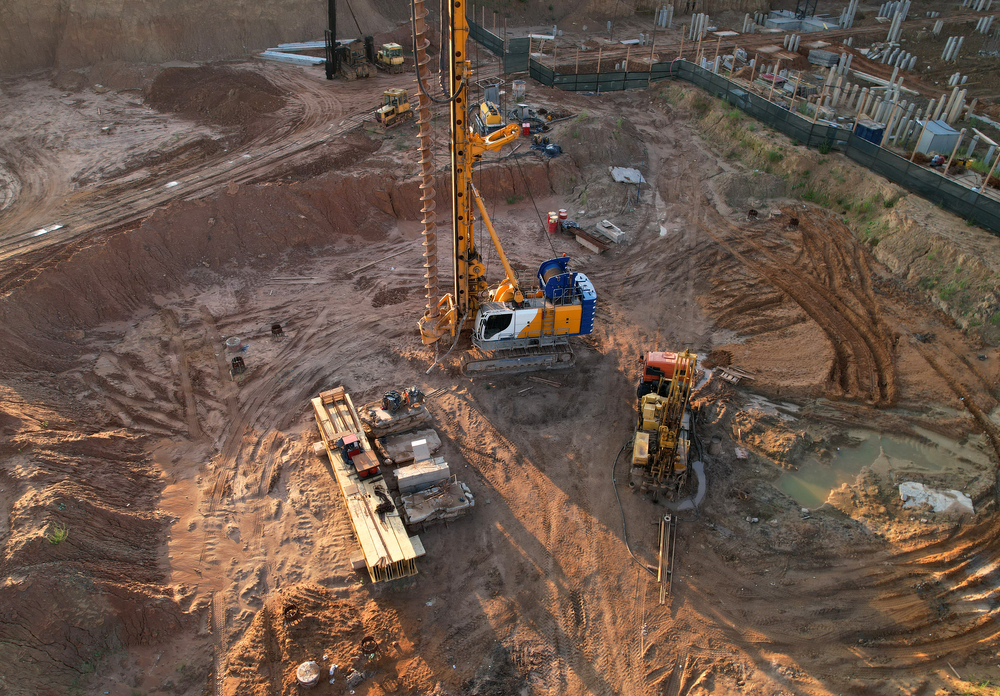More About Geotheta
More About Geotheta
Blog Article
Geotheta Fundamentals Explained
Table of ContentsWhat Does Geotheta Mean?How Geotheta can Save You Time, Stress, and Money.Top Guidelines Of GeothetaAll about GeothetaGeotheta Fundamentals Explained

They perform site examinations, collect examples, perform lab examinations, and assess data to assess the suitability of the ground for construction jobs - Tailings Engineer. Based upon their searchings for, geotechnical engineers provide referrals for structure design, slope security, preserving structures, and mitigation of geotechnical threats. They work together with various other specialists, such as architects, structural designers, and building teams, to guarantee that geotechnical considerations are integrated right into the total task style and execution
By examining the actions and residential or commercial properties of soil and rock, they can identify prospective geotechnical risks such as landslides, soil negotiation, or incline instability. Their know-how aids prevent failings or accidents that could endanger lives and residential or commercial property. Here are some comprehensive obligations and responsibilities of a geotechnical engineer: Website Investigation: Geotechnical designers conduct website investigations to collect data on subsurface conditions.
They translate the information to comprehend the properties and habits of the dirt and rock, including their toughness, permeability, compaction qualities, and groundwater conditions. Geotechnical Analysis and Layout: Geotechnical engineers analyze the data gathered throughout site investigations to evaluate the security and suitability of the website for building and construction tasks. They do geotechnical estimations and modeling to evaluate aspects such as birthing capacity, negotiation, slope stability, side planet pressures, and groundwater circulation.
Things about Geotheta
Foundation Design: Geotechnical designers play an important duty in developing structures that can safely support the designated framework. They analyze the dirt conditions and tons requirements to determine the appropriate structure kind, such as superficial structures (e.g., footings), deep foundations (e.g (https://www.merchantcircle.com/blogs/geotheta-miami-fl/2024/8/Why-Geotechnical-Engineers-at-Geotheta-Are-Your-Best-Bet/2781881)., stacks), or specialized techniques like dirt enhancement. They think about variables such as negotiation limitations, bearing capacity, and soil-structure interaction to create optimum structure layouts
They evaluate building and construction strategies, display site tasks, and perform field inspections to verify that the design recommendations are complied with. If unpredicted geotechnical concerns arise, they analyze the situation and offer suggestions for remediation or modifications to the design. Risk Assessment and Reduction: Geotechnical engineers examine geotechnical threats and threats connected with the job website, such as landslides, liquefaction, or soil disintegration.

Collaboration and Communication: Geotechnical engineers work carefully with various other professionals involved in a task, such as designers, structural engineers, and building and construction groups. Efficient interaction and cooperation are important to incorporate geotechnical considerations into the overall task style and construction procedure. Geotechnical engineers give technological expertise, answer questions, and guarantee that geotechnical demands are fulfilled.
Rumored Buzz on Geotheta
Below are some sorts of geotechnical designers: Foundation Engineer: Structure designers focus on developing and analyzing structures for structures. They analyze the soil conditions, lots needs, and website attributes to establish the most suitable structure kind and design, such as superficial foundations, deep structures, or specialized strategies like heap foundations.
They examine the variables affecting incline security, such as dirt residential or commercial properties, groundwater problems, and slope geometry, and develop strategies to stop incline failures and minimize risks. Earthquake Engineer: Earthquake engineers focus on evaluating and developing structures to hold up against seismic pressures. They analyze the seismic danger of a site, assess soil liquefaction potential, and develop seismic design requirements to make sure the security and resilience of frameworks throughout earthquakes.
They carry out field testing, collect examples, and assess the gathered data to identify the dirt homes, geologic formations, and groundwater problems at a site. Geotechnical Instrumentation Engineer: Geotechnical instrumentation designers concentrate on tracking and determining the habits of dirt, rock, and frameworks. They set up and preserve instrumentation systems that monitor elements such as dirt settlement, groundwater levels, incline motions, and structural variations to examine performance and give early warnings of potential issues.
Excitement About Geotheta
They perform tests such as triaxial tests, consolidation examinations, straight shear tests, and leaks in the structure tests to collect information for geotechnical evaluation and design. Geosynthetics Designer: Geosynthetics designers focus on the design and application of geosynthetic materials, such as geotextiles, geogrids, and geomembranes. They make use of these products to boost soil security, strengthen slopes, give drainage services, and control erosion.
They have a tendency to be investigative individuals, which indicates they're intellectual, reflective, and investigative. They are interested, methodical, reasonable, logical, and sensible. Some of them are additionally social, implying they're kind, generous, cooperative, client, caring, practical, empathetic, tactful, and friendly - Tailings Engineer.
In the office atmosphere, geotechnical engineers utilize specialized software application tools to carry out computations, create layouts, and assess data. They prepare records, testimonial project requirements, interact with clients and staff member, and coordinate job tasks. The office setup offers a conducive atmosphere for study, analysis, and partnership with other specialists associated with the job.
Geotheta Fundamentals Explained
They frequently visit project sites to conduct website investigations, examine geotechnical conditions, and gather data for analysis. These gos to entail traveling to different locations, occasionally in remote or difficult surfaces. Geotechnical designers may do soil tasting, conduct tests, and screen building activities to guarantee that the geotechnical aspects of the job are being implemented appropriately.
Geotechnical designers additionally operate in specialized geotechnical research laboratories. In these facilities, they carry out experiments, execute examinations on soil and rock examples, and assess the engineering homes of the products. Geotechnical lab designers work thoroughly in these environments, managing screening equipment, operating tools, and tape-recording information. They work together with other lab staff to make certain accurate and reliable testing outcomes.
Report this page